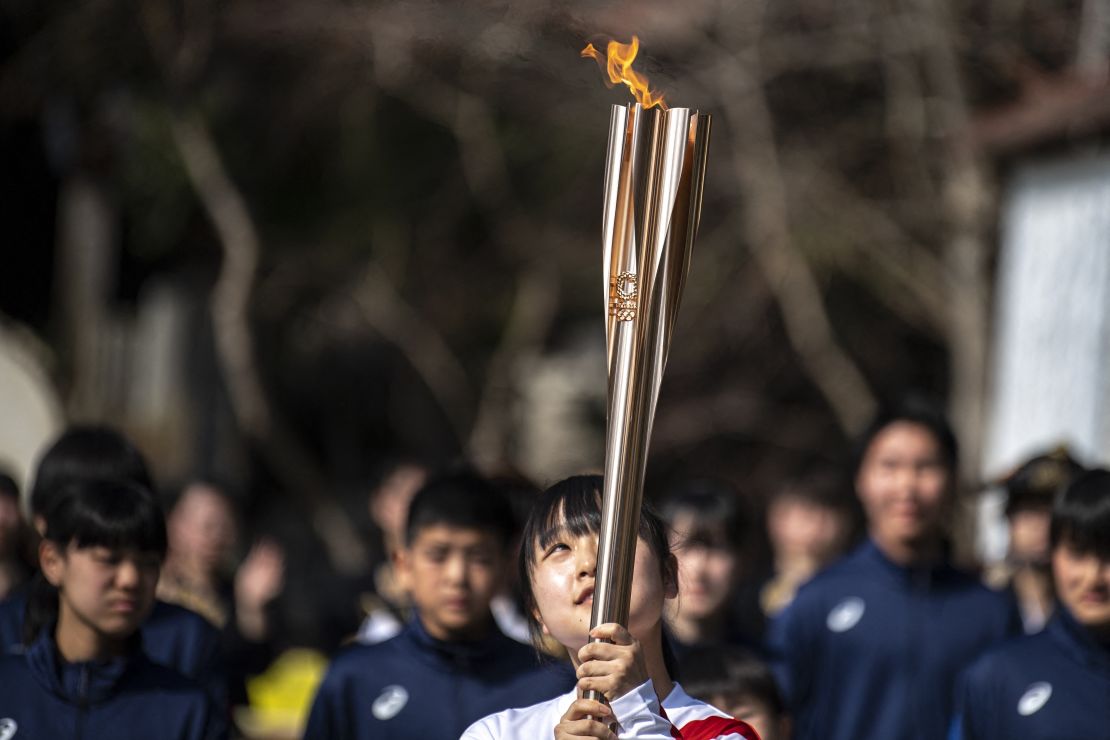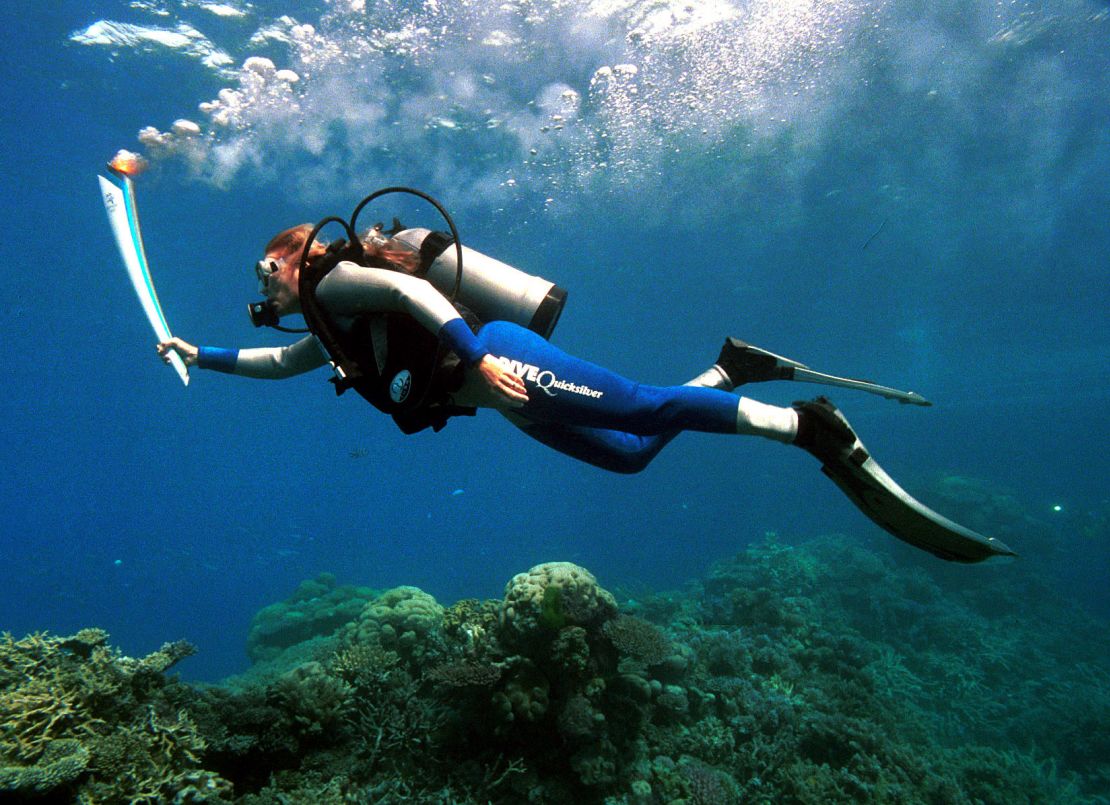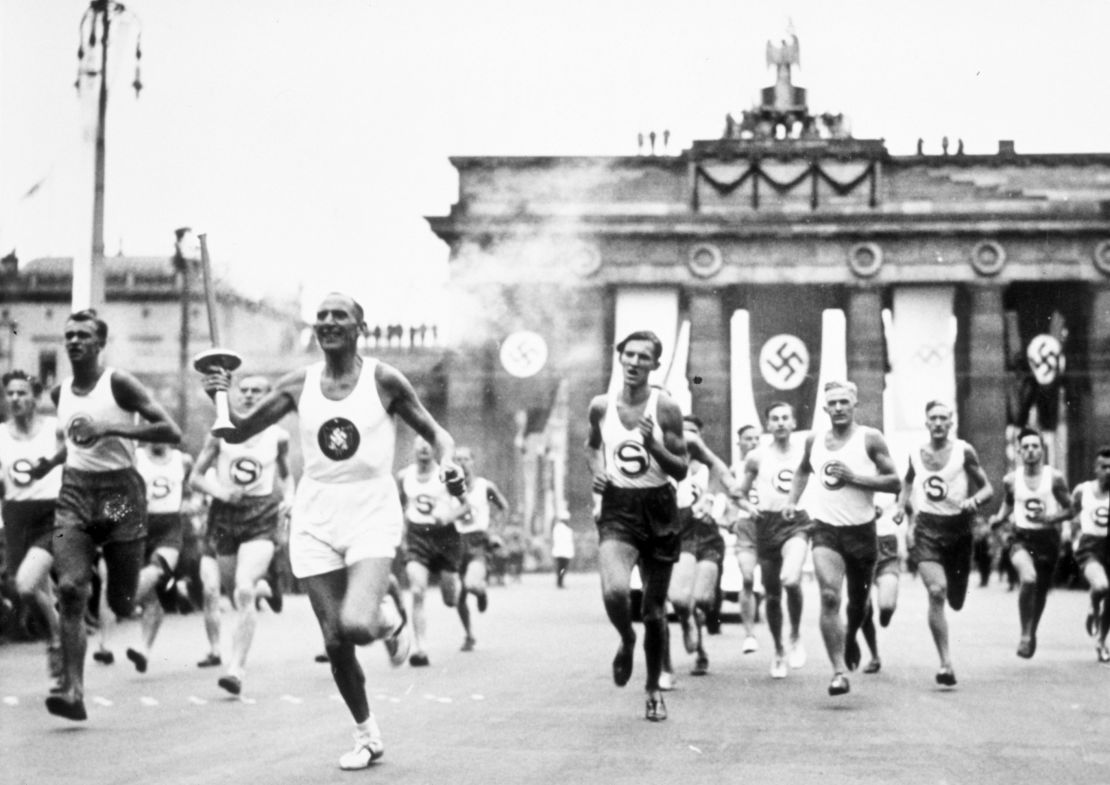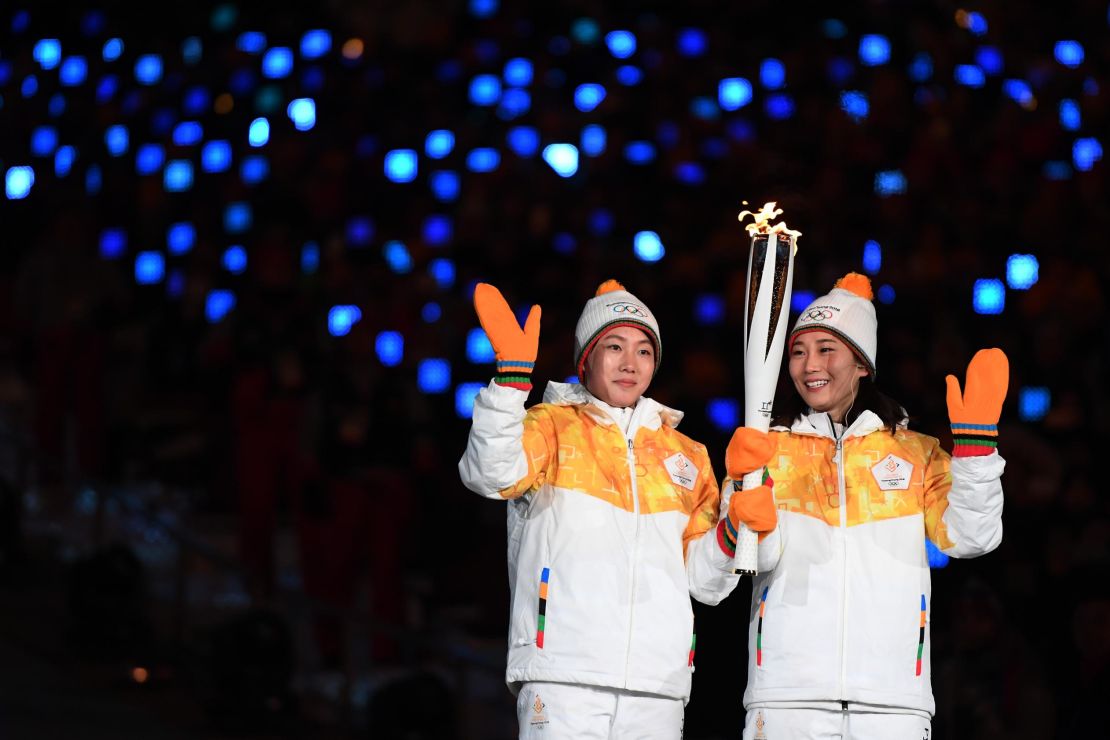The Olympic torch relay has been downgraded for the Tokyo 2020 Summer Games, with Covid-19 turning the flame’s traditionally public journey from Olympia, Greece, into a largely private affair.
While past Olympic Games have seen the torch carried undersea by a diver or flown through the air by a ski jumper, this year’s relay was instead composed of isolated ceremonies around Japan ahead of Friday’s Opening Ceremony.
Yet, many of the rituals were preserved. As always, the flame first burst to life in Olympia using sunlight reflected off a parabolic mirror, representing the might of the sun god Apollo. Since March, it has been making its way to Tokyo via plane and road (though there were none of the camel or parachute journeys seen in adventurous relays of the past).

In a typical year, thousands of runners would pass the torch hand to hand, often past huge crowds, until it reaches the main stadium. And while this relay has been largely spectator-free, the flame’s destination remains the same: the Olympic cauldron, which stays lit for the duration of the Games.
Over the decades, the torch’s appearance has become an important part of the custom. Often a visual representation of the host country, recent designs have embodied the sleek architecture of the Sydney Opera House (in 2000); a folkloric phoenix feather, an omen of good fortune in Russia (Sochi’s 2014 Winter Olympics); and the natural beauty of the Brazilian landscape (Rio 2016).

This year’s “sakura pink” torch has a cherry blossom shape that merges five individual flames into one. It was created by designer Tokujin Yoshioka, who said over email that it is a symbol of hope and “emotional recovery” from the earthquake and tsunami that struck Japan a decade ago. The body of the torch is partly made from recycled aluminum used in the shelters that housed survivors following the disaster.
An uneasy history
Though the Olympic flame has ancient roots, the relay itself is a relatively modern affair.
“There wasn’t a torch relay, in the way that we know it, for the ancient games (though) there might have been an altar burning,” said sports historian and author of “The Story of the Olympic Torch,” Philip Barker, in a video interview.
In fact, this symbol of international unity was in fact born out of nationalism – it took place in Nazi Germany during the 1936 Summer Games.
Conceived by the Berlin Olympics’ chief organizer Carl Diem, the first relay traveled over land from Olympia to the German capital via Athens, Sofia, Belgrade, Budapest, Vienna and Prague. Over the course of 12 days, the torch was passed along, hand by hand, for almost 2,000 miles.

“It really did capture the imagination,” Barker said. “In Greece, it was said that no one slept when the torch came by, because it went throughout the night, which doesn’t happen nowadays.”
The event was designed to showcase Nazi Germany’s growing power, and a young, blonde-haired runner, Fritz Schilgen, was selected as the final torchbearer for his Aryan appearance. Footage of the event was also highly orchestrated, with parts of the relay restaged and re-shot after the Games for the 1938 propaganda film “Olympia.”
“There (was) a lot of mythology, even from the start,” Barker said.
Following a hiatus in the Games for World War II, the torch relay might not have continued. But organizers of the first post-war Olympics, in London, resurrected the event, securing its place as an ongoing tradition.
“People turned out to see it at 2 am, 3 am in the morning. It was a curiosity,” Barker said of the 1948 relay. “When you consider that England was still rationing (food and supplies) at that time, to have the Olympics – and to have something unusual like this taking place – was a real boon. It really lifted people’s spirits.”
A unifying spirit
Over time, the relay’s dark origin story has faded from memory, as each new host city makes it their own. The routes have taken everywhere from days to months to complete, with backup flames (also from the original source in Olympia) now kept in miner’s lamps and carried alongside the torch.
Sometimes, plans are derailed by more than an extinguished flame: During the Tokyo 1964 Summer Games, a typhoon damaged the plane carrying the torch, and a backup plane was called in while a second flame was sent ahead to make up for lost time.
The torch designs, usually selected by the host city’s organizing committee, have also evolved, and now usually come from esteemed designers and artists.

“It’s a way of showcasing a national identity as well – ‘this is our torch,’” Barker said.
Some designs have echoed antiquity, like Rome’s classical design in 1960. Others have taken creative risks, like Lillehammer’s sleek birchwood handle and aluminum blade for 1994’s Winter Olympics, or London’s perforated gold design in 2012 that “became known as the cheese grater,” Barker said.
In this highly unusual Olympic year, Yoshioka’s cherry blossom vessel and its motto “Hope Lights Our Way,” seem especially timely. The five flames join together, with each petal symbolizing “a wish for peace and for the world to come together as one,” he said. The designer hopes the flame can be “a beacon of hope for everyone.”
The flame holds that kind of power, said Barker, who described the Olympics a unifying force in the world – and the torch relay emblematic of it.
“It does have that feeling of symbolism and connecting people,” he said.
























